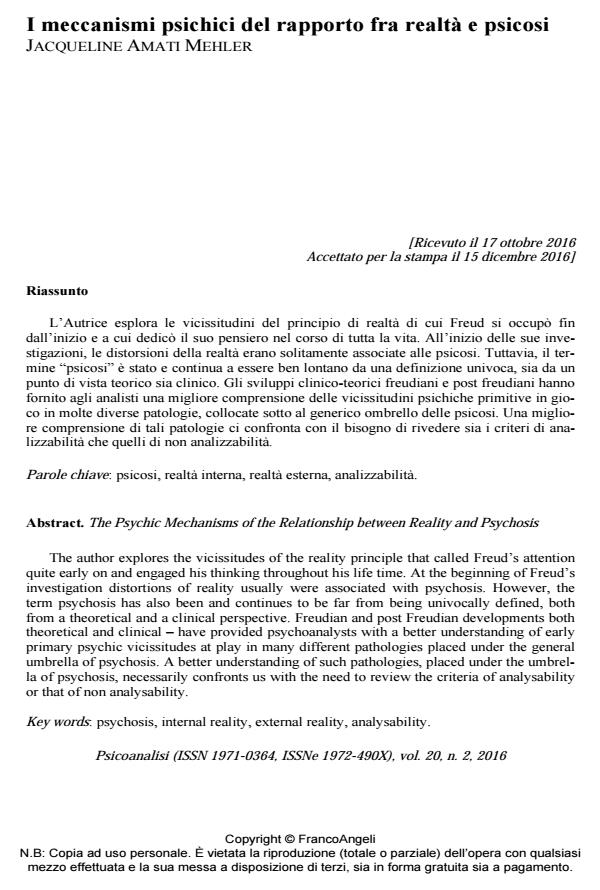The Psychic Mechanisms of the Relationship between Reality and Psychosis
Journal title PSICOANALISI
Author/s Jacqueline Amati Mehler
Publishing Year 2017 Issue 2016/2
Language Italian Pages 19 P. 5-23 File size 220 KB
DOI 10.3280/PSI2016-002001
DOI is like a bar code for intellectual property: to have more infomation
click here
Below, you can see the article first page
If you want to buy this article in PDF format, you can do it, following the instructions to buy download credits

FrancoAngeli is member of Publishers International Linking Association, Inc (PILA), a not-for-profit association which run the CrossRef service enabling links to and from online scholarly content.
The author explores the vicissitudes of the reality principle that called Freud’s attention quite early on and engaged his thinking throughout his life time. At the beginning of Freud’s investigation distortions of reality usually were associated with psychosis. However, the term psychosis has also been and continues to be far from being univocally defined, both from a theoretical and a clinical perspective. Freudian and post Freudian developments ¬both theoretical and clinical - have provided psychoanalysts with a better understanding of early primary psychic vicissitudes at play in many different pathologies placed under the general umbrella of psychosis. A better understanding of such pathologies, placed under the umbrella of psychosis, necessarily confronts us with the need to review the criteria of analysability or that of non analysability.
.
Keywords: Psychosis, internal reality, external reality, analysability.
Jacqueline Amati Mehler, I meccanismi psichici del rapporto fra realtà e psicosi in "PSICOANALISI" 2/2016, pp 5-23, DOI: 10.3280/PSI2016-002001